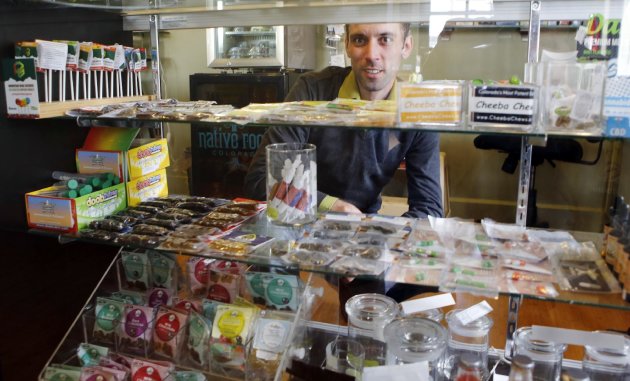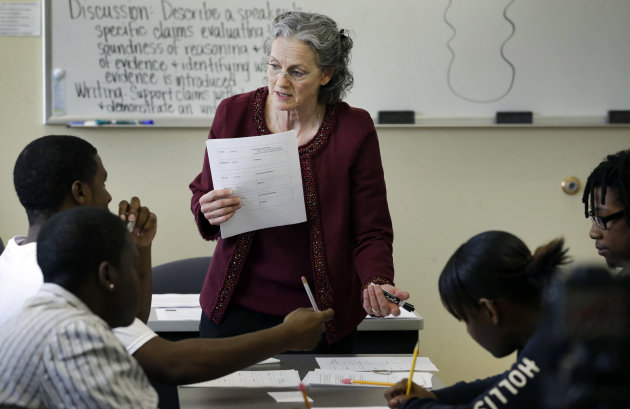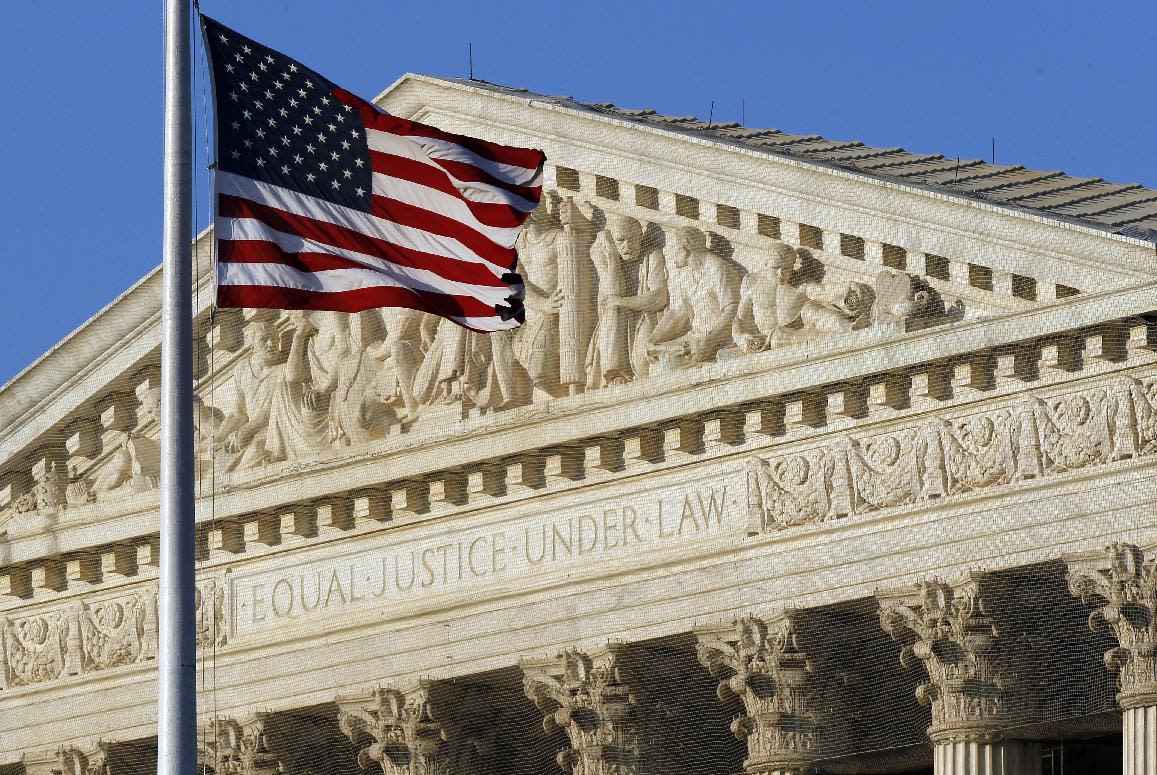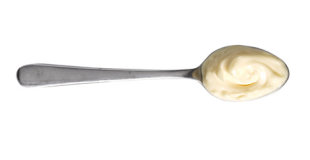Women in Space

If
you're interested in the history of space exploration, you've heard o
fate Mercury 7. But have your heard of their (unofficial) female
counterparts, the Mercury 13? Here's their story.
THE RIGHT STUFF
On
April 19, 1959, the National Aeronautics and Space Administration
(NASA) introduced the seven astronauts who would take part in the
Mercury Program. The goal: to put an American into orbit. It was
America's first manned space program, and competition for the seven
slots had been fierce. An original list of 508 military test pilots were
winnowed down to 32 candidates, who were then subjected to a battery of
intense medical, psychological, and spacecraft-simulator tests.
Eighteen made the final cut, and from these, the "Mercury 7" -Alan
Shepard, Gus Grissom, John Glenn, Scott Carpenter, Walter Schirra,
Gordon Cooper, and Donald "Deke" Slayton- were chosen.
WHY NOT WOMEN?

One
of the people who helped design the medical tests was Dr. W. Randolph
Lovelace II, a specialist in aviation medicine and chairman of NASA's
Life Sciences Committee. Lovelace wondered how well
women might
do if they were subjected to the same tests. He took an even greater
interest in the idea in the summer of 1959, when he made a trip to the
USSR to study the Soviet space program. There he learned that the
Russians were already looking into sending a woman into space. There
were even rumors that the very first Soviet cosmonaut might be a woman.
Apparently,
the Soviets felt that a woman had a great deal to offer the space
program and that in some ways, they were better suited for space travel
than men were. A typical female needed less oxygen, ate less food, and
weighed less than a typical male. That would make for a smaller payload;
no minor consideration at the dawn of the Space Age, when rockets were
smaller and less powerful. Every pound that could be shaved from the
total weight was critical. But were women physically and mentally tough
enough for space flight? The Russians thought so, and so did Dr.
Lovelace. But he wanted to test them to find out for sure.
CRITICAL TESTING
 Mercury 7 astronauts
Mercury 7 astronauts
The
Mercury 7 astronauts had undergone three phases of testing to qualify
for the space program. Phase one -medical testing- was conducted at
Lovelace's clinic in Albuquerque, New Mexico. Testing women there
wouldn't be a problem, since it was a civilian facility, and he could
ruin it as he pleased. But the second and third phases -psychological
and spacecraft-simulation testing- were a different matter. For the
Mercury 7, the tests had been run at Wright Air Development Center in
Ohio. The female test subject had no official ties to NASA, so the Air
Force simply wasn't interested in testing them.
Lovelace decided
to conduct phase one testing at his clinic anyway. Then, if those
results were promising, he thought he might be able to convince the Air
Force or some other branch of the military to make its facilities
available for further tests.
GETTING STARTED

Lovelace
established several basic criteria for his subjects: they had to be 35
years of age or younger (he later raised the limit to 40), had to be in
good health, and had to have a four-year college degree. They also had
to have a commercial pilot's license with at least 1,000 hours of flying
experience. That summer he met a 28-year-old pilot named Geraldyn
"Jerrie" Cobb at an aviation conference ion Florida. Cobb, who had more
than 10,000 hours of flying experience and three world aviation records
to her name, had just been named Pilot of the Year by the National
Pilots Association. Lovelace invited her to be the first woman he
tested.
Nothing in Cobb's experience could have prepared her for
the grueling week she spent at Lovelace's clinic in February 1960. In
one test, she had to swallow three feet of rubber hose so that the
doctor could study her gastric juices. In another, she had ice water
squirted into her ears to knock her off balance and test her
equilibrium. She also had colon exams, three barium enemas a day, and
countless X-rays. Over a six-day period, she submitted to more than 80
different medical tests.
FLYING COLORS
Cobb
tested so well against the Mercury 7 astronauts that Lovelace worried
that if he went to NASA with her results alone, they'd dismiss her as a
fluke. So he asked Cobb to come up with a list of 24 other female pilots
he could test, to be sure that her results weren't an anomaly. Eighteen
of the women agreed to come to Albuquerque, and of these, 12 tested
well enough to qualify for the next phase …if there was to be a next
phase.
The other 12 women:

* Bernice "B" Steadman, 35, commercial pilot and owner of a flight school in Flint, Michigan.
* Marion Dietrich, 34, pilot and reporter for the
Oakland Tribune in California.
* Dietrich's identical twin sister, Jan, 34, flight instructor and commercial pilot.
* Mary Wallace "Wally" Funk, 21, flying instructor at Fort Sill, Oklahoma.
*
Jean Hixson, 37, World War II engineering test pilot and flight
instructor who'd become a school teacher in Akron, Ohio (pictured
right).
* Myrtle Cagle, 36, flight instructor in Macon, Georgia.
* Sarah Gorelick, 27, electrical engineer with AT&T in Kansas City, Kansas.
* Rhea Hurrle, 30, executive pilot for an aircraft company in Houston, Texas.
* Irene Leverton, 34, charter pilot and flight instructor in Santa Monica, California.
* Gene Nora Strumbough, 24, flight instructor at the University of Oklahoma.
* Geraldine "Gerrie" Sloan, 30, owner of an aviation business in Dallas, Texas.
* Jane "Janey" Hart, 40, airplane and helicopter pilot, wife of U.S. Senator Philip Hart, and mother of eight.
THE MERCURY 13

Because
Lovelace had to fit these tests into the clinic's regular schedule,most
of the women were invited to Albuquerque individually as openings
became available. And because he insisted on secrecy -he wanted to keep
the testing under wraps until he had the results- few of the female
pilots even knew who the other members of the group were. In some case
the women did not meet each other until years later -they were a group
in name only. The name? Originally called Fellow Lady Astronaut Trainees
(FLATS), they later became known as the "Mercury 13."
Now that
Lovelace had a pool of women who had tested well against the results of
the men, he was ready to move onto phase two (psychological tests) and
phase three (spacecraft simulators). But where would he conduct these
tests?
Cobb found a psychiatry professor at the University of
Oklahoma College of Medicine who was willing to conduct the phase-two
testing on all 13 women. And the U.S. School of Naval Medicine agreed to
test Cobb in its simulators in Pensacola, Florida. If she tested well,
the other 12 FLATs would be invited, too.
COLD WATER
Cobb
went through phase two testing in Oklahoma. Again, she passed. Then she
went to Pensacola for phase three testing …and scored as well as any
experienced Navy pilot. That was all the Navy needed -it began making
plans to test the rest of the FLAT team. Before it did, however, it
contacted NASA to confirm that the space agency actually wanted the
women tested.
It didn't. "NASA," the space agency explained,
"does not at this time have a requirement for such a program." With
that, the Navy backed out. Just six days before testing was scheduled to
begin, each of the Mercury 13 received a telegram from Dr. Lovelace.
"Regret to advice the arrangements at Pensacola cancelled," it read.
"Probably will not be possible to carry out this port of the program."
 Marion and Jan Dietrich
Marion and Jan Dietrich
FLAT BROKE
By
communicating its lack of interest in women astronauts, NASA
effectively scuttled the FLAT program in 1962, at least for the time
being. The official explanation was that the space agency would only
consider military test pilots with extensive experience flying jet
aircraft. And since women were excluded from flying jets in the military
(not to mention the airlines), they couldn't qualify. Experience, not
gender, was the determining factor, NASA claimed.
In truth,
however, NASA's ban on women was motivated by a fear that the space
program would be irreparably harmed if a woman died in space. "Had we
lost a woman back then because we decided to fly a woman rather than a
man, we would have been castrated," Mercury Program flight director
Chris Kraft admitted years later.
REFUSING TO QUIT
All
of the Mercury 13 women had made tremendous sacrifices to get this far
-Sarah Gorelick and Gene Nora Stumbough had quit their jobs, and Jerrie
Sloan's husband divorced her when she refused to drop out of the
program. After all the trouble they'd been through, they didn't want to
take no for an answer.
 Jerrie Cobb and Janey Hart
Jerrie Cobb and Janey Hart
Janey
Hart, married to Senator Philip Hart of Michigan, decided that she
could no longer keep her promise to Dr. Lovelace to remain silent. She
started working her connections in Washington, D.C. writing letters to
each member of the congressional space committees. She released a copy
of the letter to the press and, with Jerrie Cobb, began giving
interviews to reporters. Hart also managed to arrange a meeting with
Vice President Lyndon Johnson, who was head of the President's Space
Council and the White House's liaison with NASA. Johnson listened
politely to Hart and Cobb, and then brushed them off by telling them
that while he wanted to help, it was NASA's responsibility to decide who
became an astronaut, not his. With that, he ended the meeting and had
the two women shown out of his office. After they left, Johnson scrawled
a note to his staff: "Let's stop this now!"
LAST CHANCE
The
meeting with LBJ had gone nowhere, but Hart and Cobb kept pushing.
Result: In July 1962, the House of Representatives Committee on Science
and Astronautics announced that it would hold three days of subcommittee
hearings to investigate whether NASA discriminated against women. A
total of sic witnesses would be called -three representing the Mercury
13 and three representing NASA.
But that wasn't quite how it
worked out. Hart and Cobb were selected to be two of the witnesses for
the Mercury 13. The third witness was an aviator named Jacqueline
"Jackie" Cochran.
WITNESS FOR THE PROSECUTION

You've
probably never heard of Jackie Cochran, but in the 1960s, she was the
most famous female pilot in the world. She's broken more speed,
distance, and altitude records than any female pilot alive, and was the
first woman to break the sound barrier. Yet she opposed the continuing
testing of the Mercury 13.
Cochran had initially supported the
FLAT program and even financed the first phase of testing at the
Lovelace clinic. Since then, however she had turned against the program.
Why? One theory: she could never be an astronaut herself. Cochran was
in her mid-50s and had tested poorly during her physical at the Lovelace
clinic. That ruled her out as a potential candidate, and that's when
she began to oppose the mercury 13. Perhaps the most famous female
aviator since Amelia Earhart did not want to be overshadowed by the
first woman in space.
HAVING THEIR SAY
On
the first day of the hearings, Cobb and Hart testified in favor of
testing the women. Then it was Cochran's turn. And just as Cobb and Hart
feared, Cochran told the committee that there was "no shortage of
well-trained and long-experienced male pilots to serve as astronauts,"
and that adding women to the mix would "slow down our [space] program
and waste a great deal of money."

On
the second day of testimony, the committee questioned George Low,
NASA's director of spacecraft and flight missions, and then questioned
astronauts John Glenn and Scott Carpenter. None of them were receptive
to the idea of allowing women into their ranks. Like Cochran, Glenn
argued that testing women for he space program was a waste of money,
since NASA had already spent millions of dollars training men for the
job and had all the astronauts it needed. "The men go off and fight the
wars and fly the airplanes and come back and help design and build and
test them," Glenn said. "The fact that women are not in this field is a
fact of our social order."
THE END
The
hearings were scheduled to last for three days, but shortly before noon
on the second day, Congressman Victor Anfuso of New York, who chaired
the hearings, banged his gavel and called the proceedings to a close. He
had collected enough information to write his report, he explained, so
no further testimony was necessary.
"NASA's program of selection
is basically sound," the final report stated, acknowledging that at
"some time in the future" NASA should revisit the possibility of
conducting "research to determine the advantages to be gained by
utilizing women as astronauts."
The Mercury 13 program was over, this time for good.
WE'RE (NOT) #1
 Valentina Tereshkova
Valentina Tereshkova
Less
than a year later, on June 16, 1963, Soviet cosmonaut Valentina
Tereshkova, a mill worker and parachute hobbyist, became the first woman
in space. How much longer would it take an
American woman to make the same trip? Twenty years.
In 1983 physicist Sally Ride became the first when she made a six-day flight on the space shuttle
Challenger.
But Ride was a flight engineer, and did not pilot the shuttle. The
first woman to command a space shuttle mission was Lieutenant Colonel
Eileen Collins, who piloted the
Columbia into orbit in 1999 -nearly 40 years after the first Mercury space mission.
 Colonel Eileen Collins, pilot STS-63 and STS-84, commander STS-93 and STS-114
Colonel Eileen Collins, pilot STS-63 and STS-84, commander STS-93 and STS-114
UPDATE
Where
are the Mercury 13 now? Some have passed away, others are still flying,
and two of them -Jerrie Cobb and Wally Funk- still hope to fly in
space.
When 77-year-old John Glenn returned to space aboard the
space shuttle in October 1998 as part of a scientific study on the
effects of aging, Cobb's supporters launched a campaign to get her
included on a future mission. At the same time, NASA officials said they
still have no plans to send Cobb into space, and the grounding of the
entire space shuttle program following the
Columbia disaster in 2003 makes her chances even more remote.
Wally
Funk isn't waiting for NASA to come around. Over the years, she has
completed her astronaut testing at her own expense, even traveling to
Russia in 2000 to train with Russian cosmonauts. She is currently
working as a test pilot for Interorbital Systems, a California-based
company that plans to launch privately-owned, privately-funded
spacecraft. "I'm still pedaling! I never lost the faith,"
she told the Los Angeles Times in
January 2004. "Whether we make it with Interorbital or not, I'm going
to make it. I don't know how, but I know it's going to happen."




 One
of the people who helped design the medical tests was Dr. W. Randolph
Lovelace II, a specialist in aviation medicine and chairman of NASA's
Life Sciences Committee. Lovelace wondered how well women might
do if they were subjected to the same tests. He took an even greater
interest in the idea in the summer of 1959, when he made a trip to the
USSR to study the Soviet space program. There he learned that the
Russians were already looking into sending a woman into space. There
were even rumors that the very first Soviet cosmonaut might be a woman.
One
of the people who helped design the medical tests was Dr. W. Randolph
Lovelace II, a specialist in aviation medicine and chairman of NASA's
Life Sciences Committee. Lovelace wondered how well women might
do if they were subjected to the same tests. He took an even greater
interest in the idea in the summer of 1959, when he made a trip to the
USSR to study the Soviet space program. There he learned that the
Russians were already looking into sending a woman into space. There
were even rumors that the very first Soviet cosmonaut might be a woman.  Mercury 7 astronauts
Mercury 7 astronauts Lovelace
established several basic criteria for his subjects: they had to be 35
years of age or younger (he later raised the limit to 40), had to be in
good health, and had to have a four-year college degree. They also had
to have a commercial pilot's license with at least 1,000 hours of flying
experience. That summer he met a 28-year-old pilot named Geraldyn
"Jerrie" Cobb at an aviation conference ion Florida. Cobb, who had more
than 10,000 hours of flying experience and three world aviation records
to her name, had just been named Pilot of the Year by the National
Pilots Association. Lovelace invited her to be the first woman he
tested.
Lovelace
established several basic criteria for his subjects: they had to be 35
years of age or younger (he later raised the limit to 40), had to be in
good health, and had to have a four-year college degree. They also had
to have a commercial pilot's license with at least 1,000 hours of flying
experience. That summer he met a 28-year-old pilot named Geraldyn
"Jerrie" Cobb at an aviation conference ion Florida. Cobb, who had more
than 10,000 hours of flying experience and three world aviation records
to her name, had just been named Pilot of the Year by the National
Pilots Association. Lovelace invited her to be the first woman he
tested.  * Bernice "B" Steadman, 35, commercial pilot and owner of a flight school in Flint, Michigan.
* Bernice "B" Steadman, 35, commercial pilot and owner of a flight school in Flint, Michigan. Because
Lovelace had to fit these tests into the clinic's regular schedule,most
of the women were invited to Albuquerque individually as openings
became available. And because he insisted on secrecy -he wanted to keep
the testing under wraps until he had the results- few of the female
pilots even knew who the other members of the group were. In some case
the women did not meet each other until years later -they were a group
in name only. The name? Originally called Fellow Lady Astronaut Trainees
(FLATS), they later became known as the "Mercury 13."
Because
Lovelace had to fit these tests into the clinic's regular schedule,most
of the women were invited to Albuquerque individually as openings
became available. And because he insisted on secrecy -he wanted to keep
the testing under wraps until he had the results- few of the female
pilots even knew who the other members of the group were. In some case
the women did not meet each other until years later -they were a group
in name only. The name? Originally called Fellow Lady Astronaut Trainees
(FLATS), they later became known as the "Mercury 13." Marion and Jan Dietrich
Marion and Jan Dietrich Jerrie Cobb and Janey Hart
Jerrie Cobb and Janey Hart You've
probably never heard of Jackie Cochran, but in the 1960s, she was the
most famous female pilot in the world. She's broken more speed,
distance, and altitude records than any female pilot alive, and was the
first woman to break the sound barrier. Yet she opposed the continuing
testing of the Mercury 13.
You've
probably never heard of Jackie Cochran, but in the 1960s, she was the
most famous female pilot in the world. She's broken more speed,
distance, and altitude records than any female pilot alive, and was the
first woman to break the sound barrier. Yet she opposed the continuing
testing of the Mercury 13. 
 Valentina Tereshkova
Valentina Tereshkova Colonel Eileen Collins, pilot STS-63 and STS-84, commander STS-93 and STS-114
Colonel Eileen Collins, pilot STS-63 and STS-84, commander STS-93 and STS-114 





 Some
mothers forgo modern obstetric facilities in hospitals and have births
at home and assisted by midwives. The latest trend in this natural
childbirth movement is called Lotus Birth. Participants don't cut the
umbilical cord connecting the child to the placenta. Instead, they keep
the placenta in a bowl and wait for the umbilical cord to wither away
naturally. Madeline Scinto of the New York Post interviewed Mary Ceallaigh, a widwife educator and advocate for Lotus Birth:
Some
mothers forgo modern obstetric facilities in hospitals and have births
at home and assisted by midwives. The latest trend in this natural
childbirth movement is called Lotus Birth. Participants don't cut the
umbilical cord connecting the child to the placenta. Instead, they keep
the placenta in a bowl and wait for the umbilical cord to wither away
naturally. Madeline Scinto of the New York Post interviewed Mary Ceallaigh, a widwife educator and advocate for Lotus Birth:

 I
don't know much about running a restaurant, but I do know that restaurateurs
fret about patrons who don't show up after making reservations.
I
don't know much about running a restaurant, but I do know that restaurateurs
fret about patrons who don't show up after making reservations.





 Did
someone mess up physics? The size of proton, long thought to be understood,
turns out to be wrong according to new research:
Did
someone mess up physics? The size of proton, long thought to be understood,
turns out to be wrong according to new research:



 "If there are no dogs in Heaven, then when I die, I want to go where they went." -- Will Rogers.
"If there are no dogs in Heaven, then when I die, I want to go where they went." -- Will Rogers.